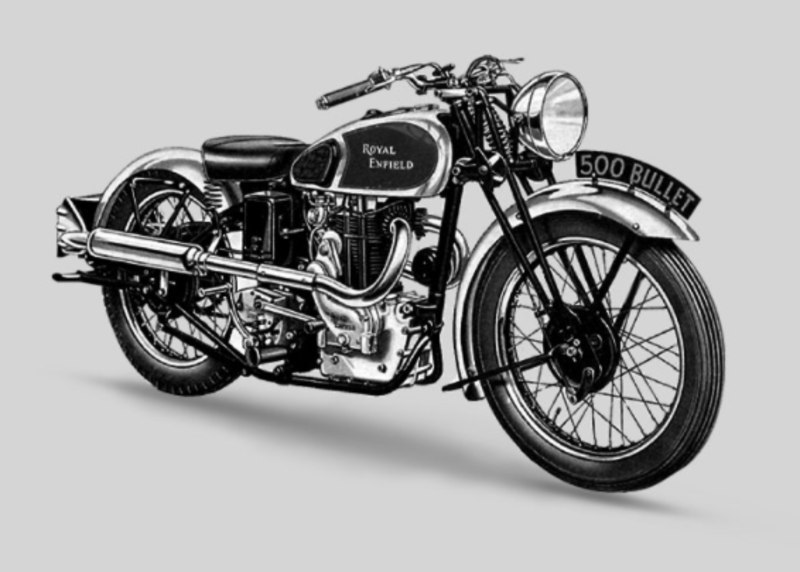Click or Press enter to Enter to Enable skip content option
Please Select a Section to Skip to
Royal Enfield, like many early motorcycle manufacturers, has its origins in bicycles—but it also supplied firearms parts to the British government’s Royal Small Arms Factory. It created its brand name simply by combining the rather impressive-sounding “Royal” and the name of the town in which the factory was located: Enfield, England. The first Royal Enfield motorcycle, essentially a bicycle with an engine bolted to the front downtube, was built in 1901.
During WWII, the company supplied the British paratroopers with a motorcycle built to be dropped out of airplanes, endearingly called the “Flying Flea.” It also supplied one of its models to the British Army and RAF; this model, first built in 1931, was called the Bullet. In 1948, the Bullet became the first British motorcycle to feature a frame with a rear swingarm, bestowing it with excellent off-road handling (it won multiple International Six Days Trial gold medals), and likely making it the model that would save the Royal Enfield brand from extinction.

After winning its independence from Britain in 1947, India had remained on good terms with its former ruler and began importing British-built Royal Enfield motorcycles in 1949. When the new Indian government decided it needed a fleet of motorcycles with which to patrol its borders, the 350cc single-cylinder Bullet was chosen and soon 800 of them were busily scooting along India’s often rough (or non-existent) roads.
With the Bullet’s popularity, it was decided that assembling the bikes in India made economic sense, and so it was that in 1955 Royal Enfield and Madras Motors formed Enfield India, with Madras (per Indian law) owning the majority of shares.

The new company built Bullets under a licensing agreement, first simply assembling them as kits and then, starting in 1957, actually manufacturing components with tooling equipment purchased from Royal Enfield. By 1962, India’s Bullets were completely manufactured domestically, and when the British firm closed its doors, Enfield India simply kept building—and selling—bikes.
In the 1970s the Japanese tsunami that crashed into Europe and America in the ’60s was heading straight for India, and the results were all too familiar. Local Indian manufacturers either succumbed to the wave or hitched a ride with one of the Japanese companies, often getting swallowed up. Enfield India was struggling to stay afloat.

In 1994, a lifesaver was tossed out: the massive Eicher Motor Group, which operates mostly in the automotive sector, acquired the company. The founder, Vikram Lal, was a motorcyclist himself and had owned a Bullet. His passion for riding was passed down to his son Siddartha, who would eventually be tasked with salvaging and rebuilding the Royal Enfield brand.
Significant investment in both time and money would be required; this wouldn’t be a “flip it” scenario. Siddartha Lal laid out his vision for the future of Royal Enfield: to return the brand to its former global glory, making it relevant to riders worldwide while maintaining its “larger than life charm.” Royal Enfield, as it was now officially known once again, began producing its first new bike in decades, the 500cc air-cooled single-cylinder Classic, which joined a new Bullet using the same engine. Then came the café racer Continental GT with a slightly bored-out version of the engine, bumping its displacement to 535cc.

After almost 50 years, Royal Enfield was once again operating in the U.K. This state-of-the-art facility opened in May 2017 and employs about 130 engineers and product development staff, including British, Europeans and Indians. It houses engine and chassis design, modeling and testing facilities including both engine and chassis dynamometers, and accessories development with full 3D scanning and printing capabilities.
While great effort is made to ensure the accuracy of the information on this site, errors can occur.
Please verify all pricing information with a customer service representative.
This is easily done by calling us or visiting us at the dealership.